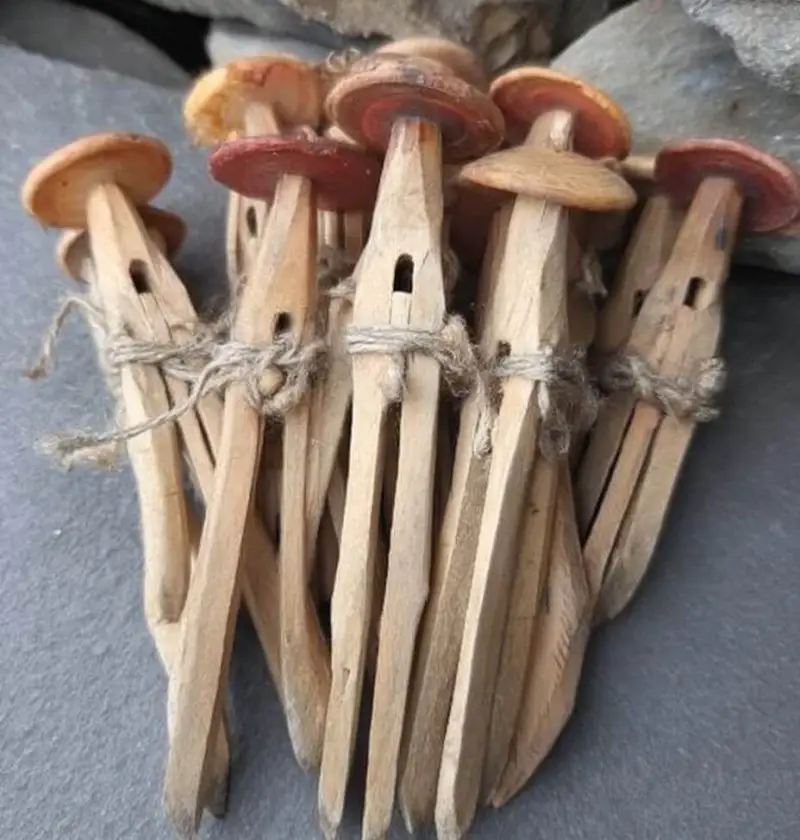Save This Recipe
So, I’m elbow-deep in a dusty drawer in my grandma’s laundry room—one of those spots that smells vaguely like soap and decades. You know the kind. I’m on a mission for nothing in particular (possibly avoiding the real reason I came over, which was to help clean out the attic), when I stumble across this small cardboard box. Inside: these strange little wooden things. Smooth, tan, slightly curved—no moving parts, no markings. Just…wood.
I hold one up like I’ve uncovered some ancient artifact. “What is this?” I say aloud, as if the washing machine’s going to answer.
Honestly, I had no clue. Zero. Zilch.
At first glance, they looked like tiny swords or maybe really primitive chopsticks that forgot how to be chopsticks. My friend said they looked like “the legs of a very sad marionette.” Not helpful. But kind of accurate.
Tiny Tongs? Voodoo Tools? Rustic Toothpick Holders?
Naturally, I went down the rabbit hole of wild guesses. I thought maybe they were some kind of hair tool? Like, a minimalist 1940s curling wand? Or maybe a DIY popsicle stick for people who had too much time and not enough actual popsicles. At one point I briefly entertained the idea that they were used in a kind of clothes-folding ritual—because let’s be real, people in the past had more patience and secrets than we do now.
Turns out, the answer was both painfully obvious and surprisingly charming.
They’re clothespins.
More specifically, wooden clothespins—the original kind. No springs, no plastic. Just two pieces of carved wood that fit together in this weirdly perfect way to grip a clothesline and hold your laundry out to dry.
Wait, People Actually Used These?
Yep. Before dryers took over—or for people who didn’t want to drop coins into a laundromat machine every week—these little guys were household staples. My grandma said she used to help her mom hang wet clothes on a line that stretched from the kitchen window to a tree in the backyard. They’d stand there chatting, slapping pins on one sock at a time. She says it with a kind of glow in her voice, like she misses the ritual of it all.
Funny how that happens, right? We race to invent things that save us time, and then we miss the slow stuff.
A Tiny Slice of History, Right There in My Hand
Here’s a bit of trivia I picked up in my very serious Googling phase: the clothespin—at least in its classic wooden form—goes way back to the 1800s. The spring-loaded version came later, but the split-wood design? That was the OG. Some were hand-carved, others mass-produced by local makers. They’re simple, sturdy, and kind of beautiful when you think about it. Like the pencil of the laundry world.
What’s wild is that something so small and low-tech had a place in nearly every home. Now, you’re more likely to see them at weddings holding up Polaroids or in some Pinterest-inspired craft project.
So… Are They Making a Comeback?
Actually? Kind of.
There’s this slow-living movement picking up steam—people are leaning into less waste, more intention. And somewhere in that mindset shift, the humble wooden clothespin is quietly doing its thing. Folks are using them again for laundry, but also for homemade advent calendars, seed packet organizers, even wall art.
I saw one person use a bunch to make a lamp shade. Was it functional? Sort of. Was it cool? Weirdly, yes.
There’s something comforting about holding a piece of wood that once held someone’s shirt flapping in the summer wind. It’s tactile, it’s real. It’s not another blinking thing with firmware updates and login screens.
What My Grandma’s Drawer Really Gave Me
Finding those clothespins wasn’t just a quirky moment of confusion—it was a tiny reminder that everyday objects used to carry a kind of poetry. People didn’t toss things after two uses. They fixed them, reused them, passed them down in coffee tins or wooden drawers.
It made me think: What are we passing down? Charger cables and expired loyalty cards?
There’s something to be said for slowing down and paying attention to the “boring” things. You never know what kind of quiet story they’re holding.
So yeah, I found these at my grandma’s house and had no idea what they were.
But I’m glad I asked.

